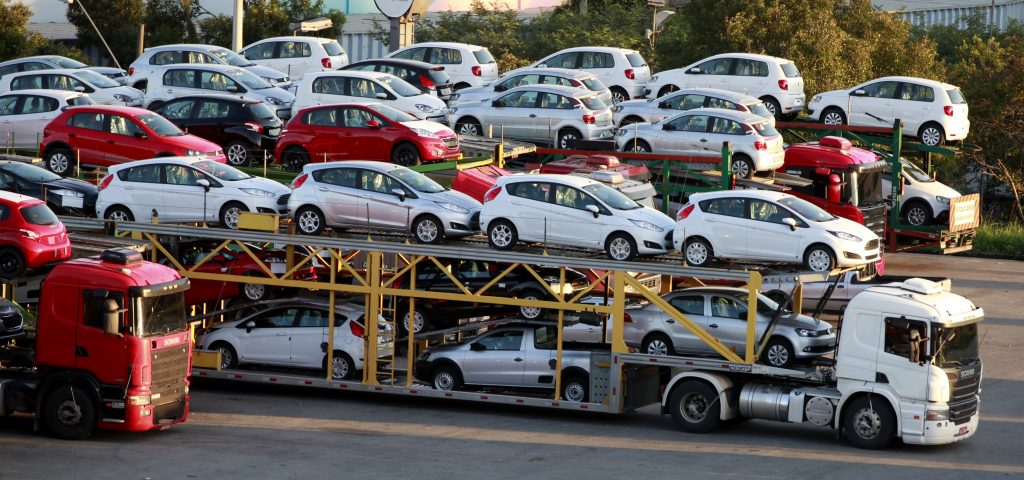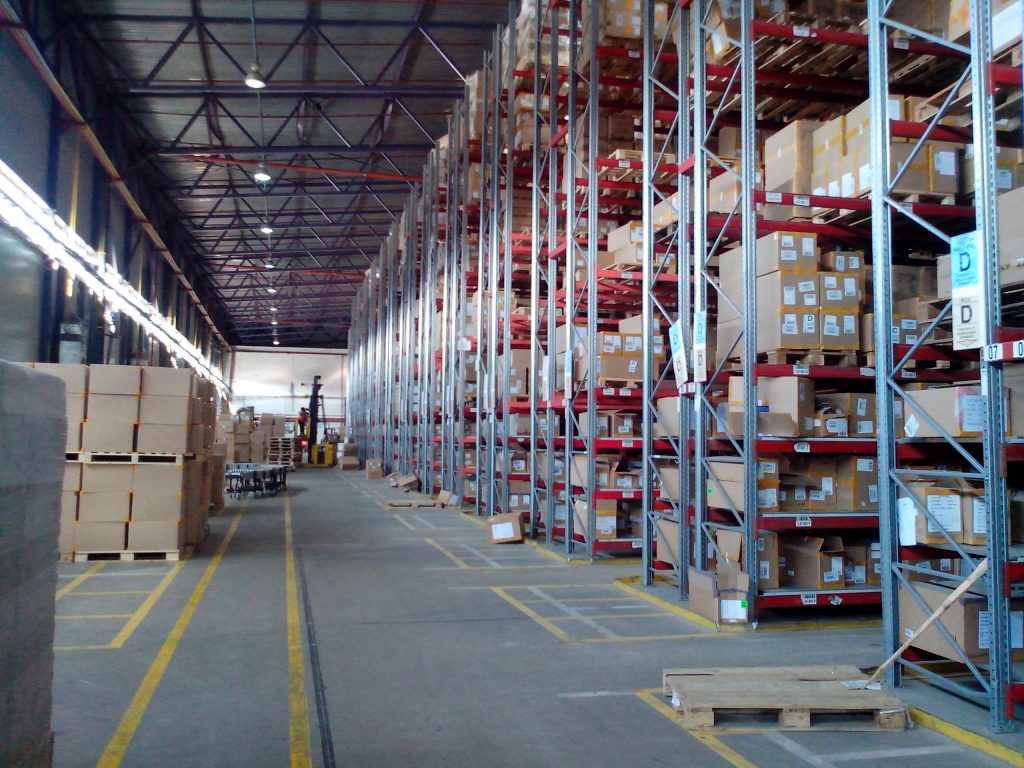 With a bad situation in Russia expected to get even worse this year, Russian logistics providers are doing all they can to hold on to business
With a bad situation in Russia expected to get even worse this year, Russian logistics providers are doing all they can to hold on to business
In 2015, the Russian automotive logistics sector felt the effects of the country’s car sales crisis, with the demand for service providers throughout Russia falling by 30-40% in line with the drop in the market, as almost all OEMs looked towards cutting spending. Victor Krachkovski, head of the forwarding department at Russian vehicle logistics provider Autologistics, says that while most OEMs don’t disclose the exact cost of their logistics services, last year’s figure for new vehicles for import, export and domestic shipments within Russia amounted to around 25 billion roubles ($331m). The average shipment fee per vehicle is around 15,000 roubles (or about $200), while the average price of a vehicle is 1.2m roubles.
Following the strong market seen in Russia in 2012 and 2013, the overall drop in vehicle logistics demand has been even steeper, with a delayed effect last year following relative stability in 2014. “Over the last two years the market experienced a steady decline in demand for [logistics services],” says Eduard Katasonov, chief manager at Russian logistics company, Tandem Truck. “In 2014 it was smooth, but in 2015 it accelerated strongly. According to our estimations, over the past two years the market size for automotive logistics services in Russia decreased by 70-75%. This happened primarily due to the significant decline in car sales in the budget price segment.”
The drop in sales has led to a rise in competition among logistics providers, with cuts in transport rates forcing some companies out of the market. “For a long time we didn’t face as many challenges as we have recently,” says Vladimir Erimosvky, general director of Agility Europe’s area east.
“Last year, not all logistics companies were able to meet changes, and some were forced to leave the market. Such a fate has touched not only small carriers, but also quite large and well-known companies in the automotive logistics market.”
Vladimir Elin, chairman of the board of directors at Smart Logistics Group, a large Russian 3PL, estimates that the drop in demand for logistics services in Russia is between 10-30%, but the rise in prices amounted to 5-10% for premium products, and 15-20% for budget products. Elin also indicates that in the current crisis, a number of both small logistics companies and larger players will not survive.

Despite the falling cost of oil per barrel – which is a bad thing for an energy commodities-based economy like Russia’s – the collapse in the rouble, economic sanctions and inflation have generally led to higher fees for most Russian logistics providers. Furthermore, the introduction of the Platon Electronic Toll Collection (ETC) system – a toll introduced last year for heavy goods vehicles on Russian motorways – has also added to the headache for logistics companies. Sergey Bobryshev, logistics director of Glovis Rus, says ETC will result in a 12% price increase for finished vehicle shipments by truck.
It is expected that in 2016, the situation for supply chain companies will worsen further. However, despite some initial bankruptcies, most logistics providers still don’t plan to leave the market, and are looking for all possible solutions to get through the difficult times ahead.
Targeting optimisation
Vladimir Elin sums up the current situation for logistics companies with a quote from Leo Tolstoy’s “Anna Karenina”: “All happy families resemble one another, each unhappy family is unhappy in its own way.” A number of logistics providers in Russia are operating despite making a loss, and as the challenges faced from provider to provider are so diverse, there is no universal strategy to deal with the crisis.
Nikita Pushkarev, commercial director of the Russian division for Gefco, itself controlled by the state-owned Russian Railways, says it is important to avoid the negative consequences of the currency fluctuations. “With such volatility in exchange rates, it is difficult to adapt business models and start buying and selling in the same currency. In some cases it can happen, but in general it is impossible to say that the market has found some consensus,” Pushkarev says.
“In my opinion, none of the major players have left the market. Russia is a very large logistics market and it is very dangerous to move away: you may not be able to return,” he adds. “There are no doubts that the market will recover; the only question is when. Therefore, all providers endure. Reduce [business size], but endure. I know companies that are willing to suffer losses for the sake of future prospects.”
The priority for many companies now is to reduce costs, and one way of achieving this is to reduce outsourcing logistics activity that can be handled in-house. “The crisis in Russia has complicated relationships with potential customers who are focused on optimising their costs and are not prepared for changes to the current situation,” says Ruslav Kirillov, general director of UniCar Rus. “Large companies are not prepared to take the risk to outsource their services. For them, it is easier to hang more responsibilities on existing staff, for the same money. It is financially profitable and it gives an illusion of total control.”
 Rail transport’s market share decreased by around 2% last year as volumes dropped and trucking got cheaper.
Rail transport’s market share decreased by around 2% last year as volumes dropped and trucking got cheaper.Gefco’s Pushkarev adds that logistics providers are themselves also implementing cost-reduction strategies, and with the rouble falling a further 15% against the dollar in the early part of 2016, even more extreme measures may be necessary. “I think this is the moment to decide whether to leave Russia or not,” he says.
On track for progress?
Despite concerns, the situation looks somewhat better for rail providers. “So far, no finished vehicle rail providers have left the market, which we can’t say about road carriers,” says Elena Kuznetsova, marketing director for Rail Trans Auto (RTA), which is also controlled by Russian Railways. “The standard reaction of companies to a crisis is cost reduction, optimisation of spends, talking to banks about financial conditions on loans, adjustment of leasing schemes, control of internal expenses, and increasing the efficiency of internal processes within an organisation.”
Last year, RTA transported 120,000 cars in its own wagons, and took 41% of the market for finished vehicle rail transport. It even expanded the list of services available to its customers in the terminals. The share of proceeds from additional terminal services actually increased by 4% per car processed, despite the fact that the general level of prices of these services fell by 10-12% compared to 2014. “This is a key achievement of the company in 2015,” Kuznetsova adds.
Kuznetsova says that rail’s market share of finished vehicle transport reduced by 2% last year compared with 2014, as OEMs shifted some volumes to road transport after shipment sizes reduced, and prices on the roads became cheaper.
Paying the price for excess capacity
As the market has decreased so significantly, logistics providers have had to pay for the excess capacity they can’t use, whether that is meeting loans on leased equipment, or bank payments for purchased equipment. The financial burden is forcing some road companies to sell their fleet at very low prices, leading to additional losses.
“All major logistics providers in the finished vehicle sector are tied to contracts with car factories. In the past, during stable demand periods, logistics companies needed to give around 50% of all contracts to subcontractors, after filling their own capacity,” says Eduard Katasonov. “However, currently, they cannot even load their own fleet at 50%. Transporters have specialised equipment and cannot switch to the carriage of other goods. There is a huge amount of excess capacity, particularly automotive carriers.”
If logistics companies have purchased their equipment through leasing, it becomes a question of survival. While very large and very small companies are holding on – large companies through fleet optimisation and working with smaller volumes, and small companies through managing to switch to private car transport – some medium-sized companies have had to cease operations.
“Leasing equipment capacities seem to be one of the main problems logistics providers have had in 2015, as they have had to pay loans with a reduced number of orders. For some companies, it has resulted in the partial loss of fleets,” says Sergey Bobryshev.
The Russian Association of Automotive Dealers (ROAD) also highlights a lot of spare capacity on car transporters. According to chief executive Vyacheslav Mozenkov, 200 automotive dealers left the Russian market last year. Despite this drop, there is still enough capacity to transport 3m units per year, nearly twice as much as the current sales volume.
 Increasing Russian vehicle exports is an ambition among carmakers and the government, however it is difficult to gear up plants for foreign markets, while low supplier localisation means parts imports keep production costs high.
Increasing Russian vehicle exports is an ambition among carmakers and the government, however it is difficult to gear up plants for foreign markets, while low supplier localisation means parts imports keep production costs high.On average, each dealership lost the equivalent of 1,000 car sales last year, according to ROAD, and this year it is expected that sales will decrease by a further 20-30% compared to 2015. As a result, bankruptcies will continue across the entire supply chain. Mozenkov says the situation is “extremely bad”.
Logistics issues in the supply chain have already affected OEMs. Last year, one of the divisions of logistics provider Albatros, which managed the supply of components to Renault and AvtoVaz, went bankrupt. Within several months, the OEMs couldn’t receive the necessary components for production after Albatros’s warehouse partners held onto parts as recompense for outstanding debts. Similar situations have affected a number of other manufacturers.
Firms across central Asia are experiencing similar problems. Elena Kuznetsova says the situation in Kazakhstan, Belarus and Armenia is almost the same as that in Russia. These countries have a common customs space within the Eurasia Economic Union, and most logistics providers consider it as one market. In Ukraine, the market is in even more dire shape. Car production dropped by 71% in 2015, and imports are down too. According to the head of the Ukraine Association of Automotive Dealers and Importers, Alexandr Nazarenko, local dealerships are closing at an alarming rate.
The move to export
The Russian government and a number of logistics providers believe the industry could partially recover by developing vehicle exports. “The devaluation of the rouble and the decrease in import volumes in Russia were the main challenges for logistics providers in 2015,” says Alexandr Bulygin, manager at TMBC Logistics. “The ability of companies to refocus their services for export will be the key to success in 2016. The general market will also be reducing as the small players leave.”
According to Bulygin TMBC Logistics’ sales actually increased in 2015 thanks to new export routes through the terminal in Novorossiysk, allowing the company to dock with ro-ro carriers in Gemlik, Turkey and Alexandria, Egypt. “We’re expecting significant volumes in 2016 through services in the Persian Gulf, the Red Sea and the Middle East, including Syria,” he says. “Within the next two years, if companies can find a healthy balance between export and import deliveries, they will survive.”
Developing exports is especially attractive for logistics providers at the moment given the recently approved subsidy of five billion roubles towards logistics costs within Russia applicable to cars destined for export. A similar amount of money is also available to adapt cars to country-specific standards, including safety and emissions. The Russian Ministry of Industry and Trade promised that this support would be available for several years, so that by 2025, Russia should export 25% of the vehicles it produces, or around 500,000 units.
 The focus on cost reduction in the Russian market means companies are reluctant to outsource logistics functions, preferring to add more responsibilities in-house.
The focus on cost reduction in the Russian market means companies are reluctant to outsource logistics functions, preferring to add more responsibilities in-house.However, analysts aren’t convinced that these plans will go ahead, especially as almost all schemes planned by logistics providers to export Russian cars have been unprofitable. “Based on one local OEM we have estimated the cost of exporting cars to countries including Latin America and Asia via St Petersburg,” says an executive from a logistics provider who wished to remain anonymous. “The average cost amounts to $1,900 per unit. Given the promised subsidy of $150 per car from the Russian government, and the prices of cars at the point of sale, for most markets the delivery would only be profitable in large numbers, which are not guaranteed.”
Sergei Udalov, deputy director at Russian consultancy Autostat, says that although production of cars in Russia has become more profitable following the fall of the rouble, manufacturers are only saving on the cost of labour. As production volumes are so small, OEMs aren’t localising component production, so parts still have to be imported from abroad, for which costs are rising.
Last year, Hyundai and Kia saw increased exports out of Hyundai’s plant in St Petersburg. Glovis manages the two OEMs’ logistics, and in the middle of 2015 launched exports to Lebanon and Egypt. At the start of 2016, exports to both countries reached 1,000 units per year, according to Sergey Bobryshev. He adds that the government’s logistics subsidies will support exports, but primarily to the Eurasian Customs Union and central Asia.
“We are exporting cars from St Petersburg. At the moment we are considering some new schemes,” Bobryshev says. “After the allocation of state subsidies, we may consider new ways of delivering cars, in particular to Kazakhstan and a number of other CIS (commonweath of independent states) countries.”
However, most providers still say that, even with increasing exports, the Russian government will not be able to cushion the negative effect on logistics providers from the sharp fall in vehicle sales. The volume of sales and demand for logistics services may start growing in 2017-18, but it will take several years for the market to find a new balance, and see which companies have managed to survive these toughest of times.


























![Global[1]](https://d3n5uof8vony13.cloudfront.net/Pictures/web/a/d/s/global1_726550.svgz)









